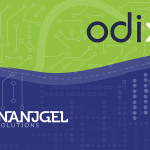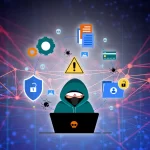In today’s digital age, cybersecurity risks have become a ubiquitous and pervasive threat to organizations of all sizes. As companies grow, the need to manage these risks effectively and efficiently becomes increasingly vital. However, the traditional governance, risk, and compliance (GRC) model has proven insufficient to manage the complexity of modern cybersecurity risks. The solution lies in implementing an integrated cyber risk management software platform that automates much of the process, providing a more accurate representation of an organization’s security posture. In this blog, we will explore the need for organizations to adopt the latest cyber risk management techniques, the limitations of the traditional GRC model, and how an integrated cyber risk management solution can help organizations mitigate their risks and enhance their security posture.
Every organization, regardless of its size, needs to be aware of its own information-security risk. However, for larger companies and enterprises, the issue is greatly magnified. A large organization needs to be aware of vulnerabilities not only in its own complex, geographically distributed systems, but also in those of its third-party vendors and suppliers. This is where cyber risk management comes in.
Cyber risk management is a framework and a process for an organization to inventory, assess, prioritize, mitigate, and monitor its information-security risks, whether those risks are in-house or in the systems of a third party. Risk management is not just a cataloguing of vulnerabilities and other weaknesses. Instead, it is a process that also considers how likely a weak spot is likely to be exploited and what the resulting consequences would be.
Cyber risk management has traditionally been performed manually, tallying up vulnerabilities revealed through questionnaires with IT staffers and inventorying endpoint devices and other network assets. But this can lead to inherent bias, resulting in qualitative assessments that may be too rosy or too gloomy. By contrast, integrated cyber risk management solutions are partly or fully automated software tools. They aim to speed up the inventorying and prioritization steps through scanning and machine learning and to remove bias by providing data-driven quantitative assessments.
Because integrated cyber risk management tools perform thorough assessments of a company’s systems from both sides, inside and outside the network perimeter, they can also be used to generate security scores. For example, the cyber risk management solution offered by FortifyData generates a risk score ranging from 300 to 900, much like a credit score. FortifyData’s Founder, Victor Gamra, says this score is much more accurate than most security scores, that are based on quick external scans that cannot match the deep internal knowledge that FortifyData’s platform has.
One common criticism of governance, risk, and compliance (GRC) frameworks and GRC tools is that they are too inflexible to keep pace with rapidly changing cybersecurity risks. Cyber risk management can be seen as an outgrowth of GRC strategies and platforms formulated after the Enron and WorldCom scandals of 2001 and 2002. However, as cybersecurity risks continue to evolve, cyber risk management platforms have become more necessary than ever.
In conclusion, as organizations grow larger, so does the need to implement integrated cyber risk management platforms that can properly take stock of the hidden vulnerabilities that lie within company networks and devices – and within third-party suppliers. Implementing integrated cyber risk management platforms will not only give organizations better ideas of their own risks but also generate a more accurate security rating than existing scoring services can provide. By automating much of the process, organizations can better manage their cybersecurity risks and stay ahead of potential threats.
Ready to take your organization’s cybersecurity to the next level? Explore the benefits of integrated cyber risk management solutions and take the first step towards a more secure future. Register for the online seminar today to learn more.




